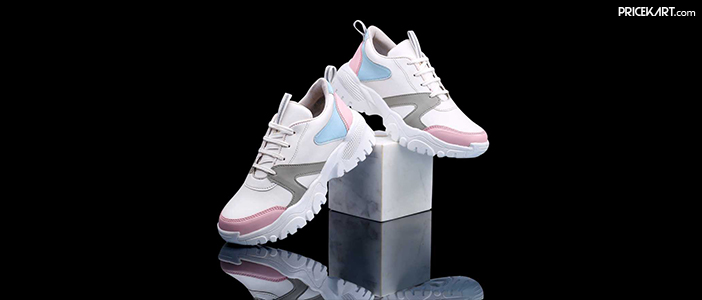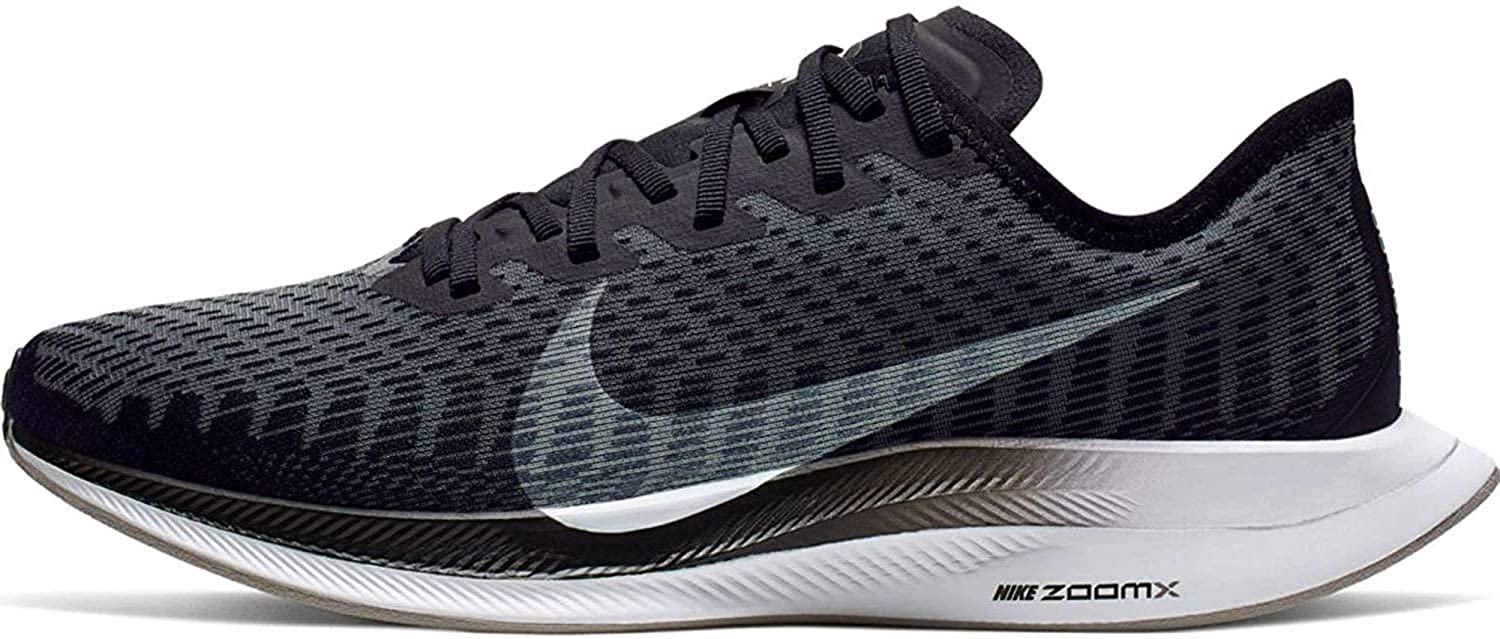The pandemic has driven us all to adopt—and abandon—a variety of regimens, but finding the best running shoes for women by Pricekart can help you recommit to your fitness objectives, whatever they may be. Investing in a high-quality pair of shoes is always a good idea, whether you’ve taken up long-distance running, have your sights set on a future marathon, or merely began a socially distant jogging regimen. So we talked to various runners, from experts and fitness influencers to ladies who like to run a few miles now and again to figure out the finest running shoes for women.
Top 10 Most Popular Running Shoes for Women
Types Of Running Shoes
1) Stability Shoes
Stability shoes are a great choice if you suffer from overpronation or would like greater arch support. These also have a more constructed top with an additional overlay that helps you keep your balance and makes them incredibly durable.
2) Motion Control Shoes
They’re made for those who have extreme pronation, which means their feet roll inwards too much as they land. These shoes include firmer heels, denser foam, and a well-constructed upper with an overlay.
3) Neutral Running Shoes
People with moderate foot mobility and neutral biomechanics should wear neutral shoes. It’s a shoe with a simple upper and minimal overlay, as well as a midsole that’s relatively consistent.
4) Cushioning Shoes
Cushioning shoes are made to allow your foot to roll inward to absorb impact. An extremely soft midsole also distinguishes cushioned shoes with minimal medial support.
5) Minimalist Shoes
They’re built with little cushioning and a low heel-to-toe drop to enable easy jogging and a more natural stride. They are somewhat flexible, but not as much as barefoot running shoes.
6) Bare Foot Shoes
These shoes feature very thin soles in order to give protection against elements. The shoe has zero heels to toe drop, is tough, incredibly light, and very flexible.
Buyer’s Guide: How To Pick The Right Running Shoe
1) Shoe Width
Consider a shoe with enough room for your toes to move around freely without feeling cramped. Remember that your feet swell while you run, so make sure you have enough room for your toes to move around freely. Tip: The widest point of your shoe can simply be found by looking at the insole.
2) Shoe Length
The distance between the longest toe and the centre of the heel curve is usually the length of your perfect shoe, and there should be enough room between your longest toe and the front of the shoe. Tip: If you buy shoes online frequently, make sure to check the unique size charts for each pair, as a size seven from Puma may be similar to a size 7.5 from Adidas.
3) Heel to Toe Drop
It’s also referred to as the offset. To put it another way, this figure shows the numerical difference between the shoe’s heel and toe stack heights. Typical shoes have a 10 to 12 mm offset.
4) Level of Cushioning
Shoes with big cushions are also more comfortable and safer to run in if you’re on a surface with sharp items. If you prefer less bulky, lightweight, and flexible shoes, you may need to explore lighter cushioning.
5) Type of Feet
The feet, like the faces, come in a variety of shapes and sizes. The biology of our feet determines the type of shoe that best fits each of us. Before purchasing a running shoe, you must first determine the type of foot.
6) Pronation
We all run in various ways, which is why there are three types of pronation, neutral pronation, overpronation, and severe overpronation.
7) Arch Category
When you have a low arch, you often land on the outside of your foot and roll over into the inside when you shift your weight. If you usually land on the middle of your foot, towards the corner of your heel, then roll over to the inside of your feet, you have a normal arch. If you have a high arch, your foot does not rotate enough as you land, referred to as under pronation.
8) Breathability
Good shoes are highly breathable, which helps to keep your feet dry. Most running shoes include a mesh top that allows for free air circulation, which helps to regulate sweating.
9) Support
A good pair of running shoes should have a good support system, and poor support can cause knee pain, as well as bruises and injuries. Make sure the shoes offer arch support, as this will provide much-needed stability.
10) Material
Several fundamental features of a shoe, such as a durability, comfort, and performance, are determined by its material. Make sure the shoe you purchase is made of waterproof material.
11) Shoe Composition
Choose a seamless shoe composed of a durable fabric that has reinforced tough stitching. This contributes to the shoe’s long-term durability.
12) Cost
Although most trainers will tell you that the quality of a shoe should always take precedence over the price, there are plenty of shoes on the market for everyone, including those on a low budget.
Top 10 Most Popular Running Shoes for Women
1. Nike Pegasus Turbo 2
The Turbo 2 is one of Nike’s top everyday trainers, taking everything excellent about the Turbo and adding even more cushioning. It now has a light and best-in-class (85 per cent energy return) ZoomX foam midsole, as well as a very durable React foam midsole, as seen in Nike’s top-end shoes. This shoe has a fantastic blend of comfort, cushioning, and responsiveness, thanks to the combination of both.- Best-in-class softness and responsiveness
- Midsole ZoomX
- React Foam midsole for greater durability
- Better than Turbo in terms of energy return
- It’s not as tough as the Turbo
- This is not a good choice for a beginner runner’s everyday trainer
2. Asics GT 2000
ASICS has created a fantastic shoe with this model. It is appropriate for both indoor and outdoor running. The cushioning is excellent, and the heel counter gives excellent support. The midsole is comprised of EVA, and the Ortholite Sockliner in the front fits like a sock. The shoes also offer a high level of shock absorption.
- Midsole made of EVA
- Lightweight
- It may be utilized for both the purposes – indoor and outdoor
- Ortholite sock liners ensure a comfortable fit
- Metal inserts cause ankle pain
- Not particularly long-lasting
3. Asics Gel DS 24 Trainer
First and foremost, it is the best-looking DS ever, as well as a very light sneaker, weighing only 246 grammes for men and 210 grammes for women. This is despite adding a thicker FlyteFoam midsole with three different densities in various shoe locations. The upper is an engineered knit unit with stretch zones and dense knits that maintain a balance of fit, breathability, and structure.
- In the category of Lightweight Stability Shoes, these are among the best
- Upper is made of engineered knit and has a correct and comfortable fit
- Sufficient cushioning for speed runs
- Rubber lugs have been added for further durability
- The EVA Trusstic in the outsole provides increased ground contact
- Transitions have been improved
- The tongue sleeve isn’t great and can slip at times
- Unsuitable for high-intensity workouts
4. Asics GT-1000 6
- SPEVA foam is soft and responsive
- A comfortable, glove-like fit
- Long distances are not a problem because there is no weariness
- For overpronators, there is a lot of stability
- The outsole is made of very tough rubber
- Some may find it overly encouraging
- A little too heavy
5. Nike Downshifter 9
The Nike Downshifter is a populous series from the brand that offers value for money. This sleek-looking, high-performance running shoe is ideal for daily runs, casual use, or gym exercises. The strong phylon midsole paired with a tough outsole can handle everything, light gravel included. This is something that everyone desires: a well-known brand that they can rely on.
- Cushioning is soft and comfortable
- Slim fit
- Phylon midsole provides a comfortable run
- The outsole material is quite robust
- The heel counter is quite worn and deteriorates quickly
- The toe box could have been a little better
6. Pume Nrgy Asteroid
Puma’s entry-level running shoe is the NRGY Asteroid. A Softfoam sock liner gives the shoe a contemporary and streamlined aesthetic. The fit+ lacing system performs a wonderful job of firmly fastening the tongue while the EVA midsole provides a nice bounce and comfortable ride.
- The shoe that is both comfortable and stylish
- The ride is bouncy and pleasant
- The soffit sock liner provides a great deal of comfort
- Lightweight
- Expect more stability
- It cannot be used for lengthy, strenuous runs
- The sizing is a little small
7. Skechers GoRun Ride 7
- The upper is breathable and has a sock-like fit
- The flight generation foam is extremely sensitive
- The shoe is quite spacious
- There’s a lot of cushioning
- Excellent price/quality ratio
- No outstanding feature
8. Adidas Galaxy 4
- Breathable, lightweight upper
- Fit suits a majority of people
- Large midfoot cage
- Cloudfoam cushioning is great.
- Value for money.
- Lacks waterproofing
- Better support on heel and toe expected.
- Upper wears down quickly
9. Asics Dynaflyte 3
- Foam that is thick and bouncy
- Durable
- Brief break-in period
- Appealing colour and styles
- Excellent for beginners
- Foam in the midsole is too thick
- Experienced runners could take a different approach
10. UA Micro G Pursuit SE
Years of experience in the apparel industry are on display here! At a great price, a good-looking, comfortable-fitting lightweight running shoe in India that is adaptable enough for daily jogging and other leisure applications.The high-rebound midsole has a single-piece Micro G foam that aids in smooth landings and explosive takeoffs.- The upper design, appearance, and feel are excellent.
- The midsole provides ample cushioning and responsiveness.
- Running characteristics are bouncy
- Outsole with a good grip
- The design of the toe box is inherently flawed.
- More support would have been beneficial.
Frequently Asked Questions
1) How do you pick the right running shoes?
- Determine the reason for your purchase.
- If you want to jog every day, go with an everyday trainer.
- If you’re serious about your training, you’ll need at least two pairs of trainers and uptempo shoes.
- When purchasing a shoe, put your comfort first.
- When testing, ALWAYS wear socks.
- Examine the shoe’s flexibility.
- A stiff shoe will restrict your feet’s ability to flex.
2) What exactly is uptempo?
Athletes train and race in various shoes at various times of their careers. They usually choose a well-cushioned daily trainer that lasts a long time for frequent exercise. Uptempo training is what they undertake to improve their speed. These shoes are typically more lightweight, responsive, cushioned and bulkier than racing cleats.
3) What are the differences between neutral and stability shoes?
Neutral shoes are designed for neutral runners or those whose feet do not pronate while they run. Stability shoes are designed for runners who overpronate or even under pronate while running.

